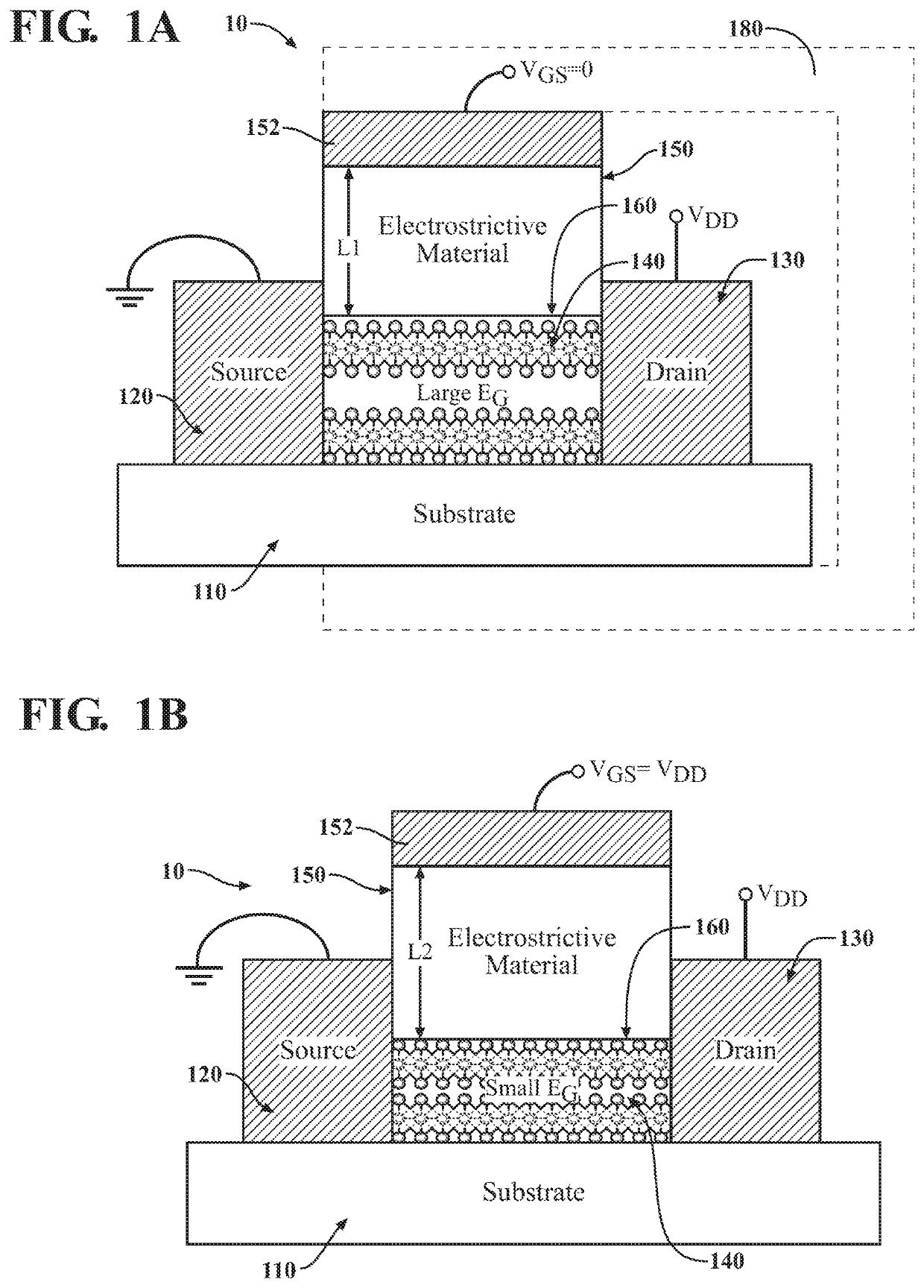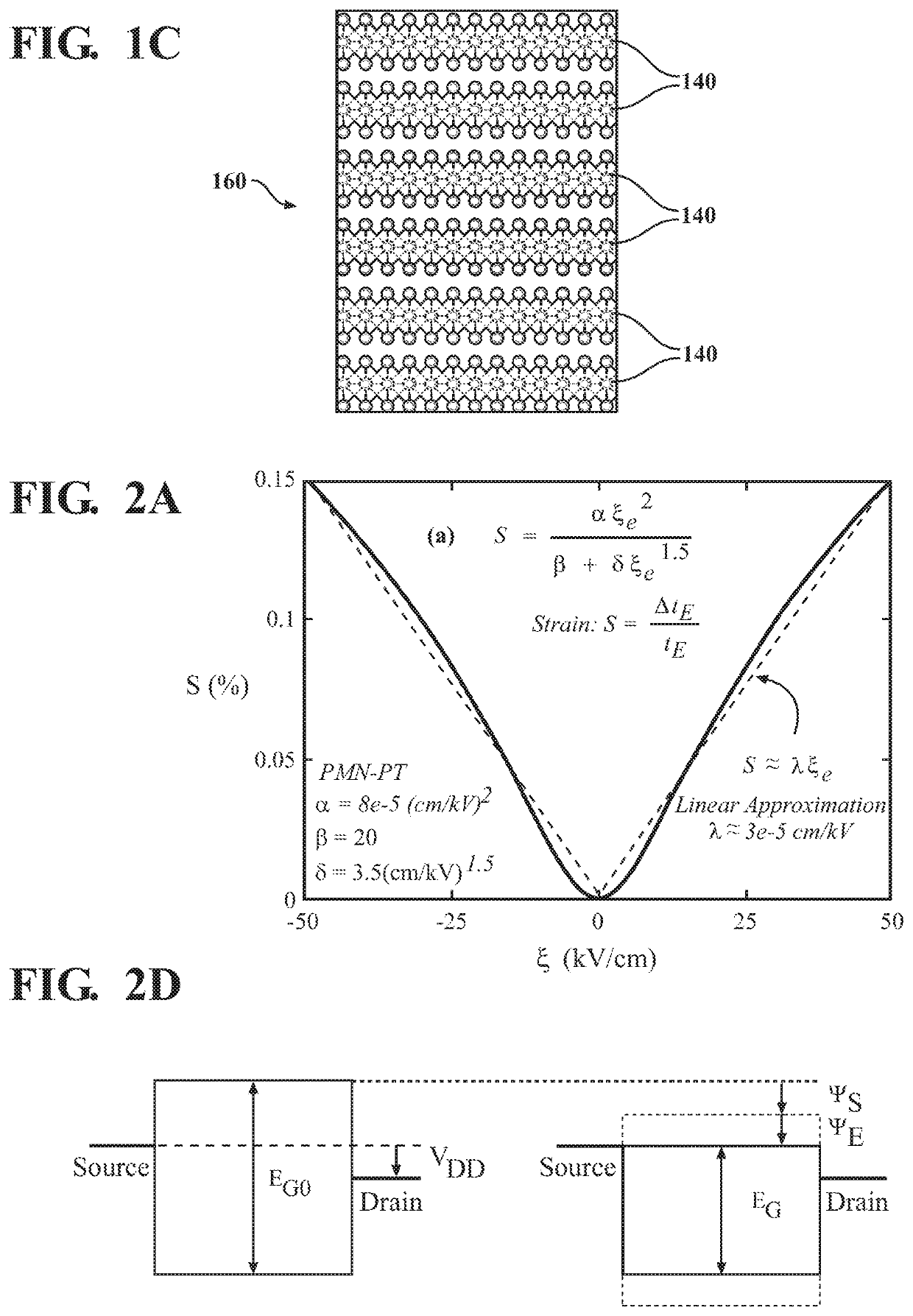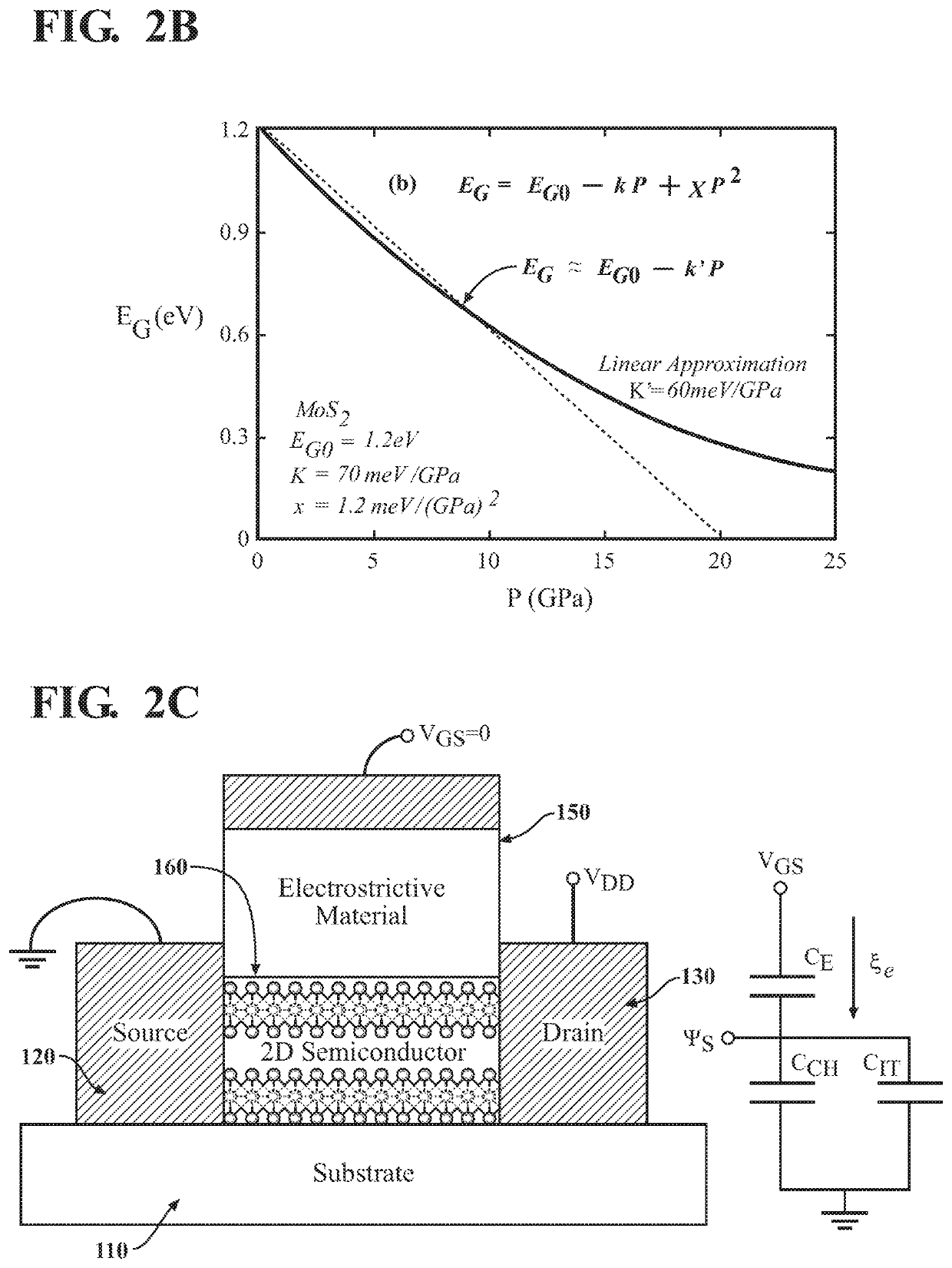Two-dimensional electrostrictive field effect transistor (2D-EFET)
a two-dimensional electrostrictive field and transistor technology, applied in the direction of basic electric elements, electrical apparatus, semiconductor devices, etc., can solve the problems of increasing the power density at the same rate, increasing static and leakage power densities at a much faster rate, and power/heat dissipation, henceforth, becoming the main problem. , to achieve the effect of reducing the band gap of two-dimensional layered materials
- Summary
- Abstract
- Description
- Claims
- Application Information
AI Technical Summary
Benefits of technology
Problems solved by technology
Method used
Image
Examples
embodiment 600
[0075]FIG. 6 is a cross-sectional block diagram of a 2D-EFET according to another embodiment of the present invention. The embodiment 600 shown in the FIG. 6 has four terminals i.e. source 610, drain 620, gate 630, back gate 640, and a capping layer 690. The 2D-EFET 600 may be manufactured by depositing a layer of the back gate 640 on a substrate 650. Consecutive layers of a gate 630, and a dielectric 670 may be deposited on the back gate 640. The gate 630 includes a column of electrostrictive material 660 that is deposited on the back gate 640. The source 610, drain 620, and at least one layer of 2D material 680 may be provided on the dielectric layer 670. The 2D material 680 comprises a first surface 605 toward the capping layer 690 and a second surface 615 toward the dielectric 670. According to a non-limiting embodiment, the resulting assembly of the electrostrictive material 660, gate 630, dielectric 670, source 610, drain 620, and at least one layer of 2D material 680 may be e...
embodiment 800
[0080]FIG. 8 is a cross-sectional block diagram of a 2D-EFET according to another embodiment of the present invention. The embodiment 800 shown in the FIG. 8 has four terminals i.e. source 818, drain 810, first gate 814, second gate 804, and a capping layer 802. The 2D-FET 800 may be manufactured by depositing a layer of the first gate 814 on a substrate 816. Consecutive layers of a 2D-material 808, and the second gate 804 may be deposited on the first gate 814. The first gate 814 and the second gate 804 respectively include columns of electrostrictive material 812, and electrostrictive material 806 that are deposited toward the 2D-material 808. The source 818 and drain 810 are connected to the columns of electrostrictive material 812 and 806 toward an opposing side away from the first gate 814 and second gate 804, respectively. According to a non-limiting embodiment, the resulting assembly of electrostrictive material 806, electrostrictive material 812, first gate 814, second gate ...
PUM
| Property | Measurement | Unit |
|---|---|---|
| gate length | aaaaa | aaaaa |
| length L1 | aaaaa | aaaaa |
| length L2 | aaaaa | aaaaa |
Abstract
Description
Claims
Application Information
 Login to View More
Login to View More - R&D
- Intellectual Property
- Life Sciences
- Materials
- Tech Scout
- Unparalleled Data Quality
- Higher Quality Content
- 60% Fewer Hallucinations
Browse by: Latest US Patents, China's latest patents, Technical Efficacy Thesaurus, Application Domain, Technology Topic, Popular Technical Reports.
© 2025 PatSnap. All rights reserved.Legal|Privacy policy|Modern Slavery Act Transparency Statement|Sitemap|About US| Contact US: help@patsnap.com



